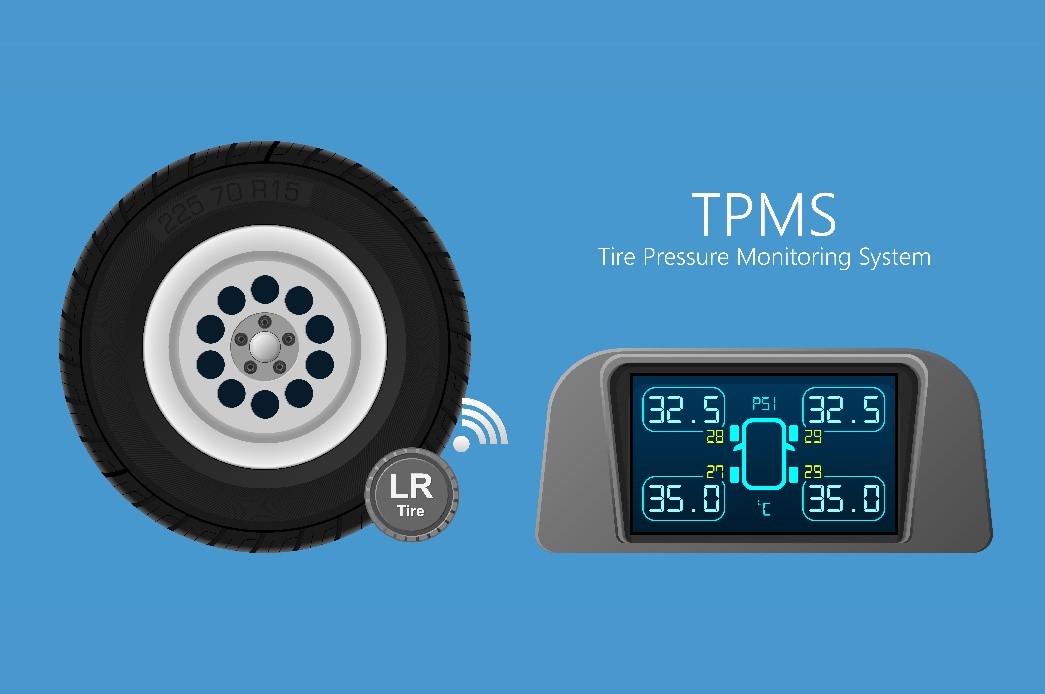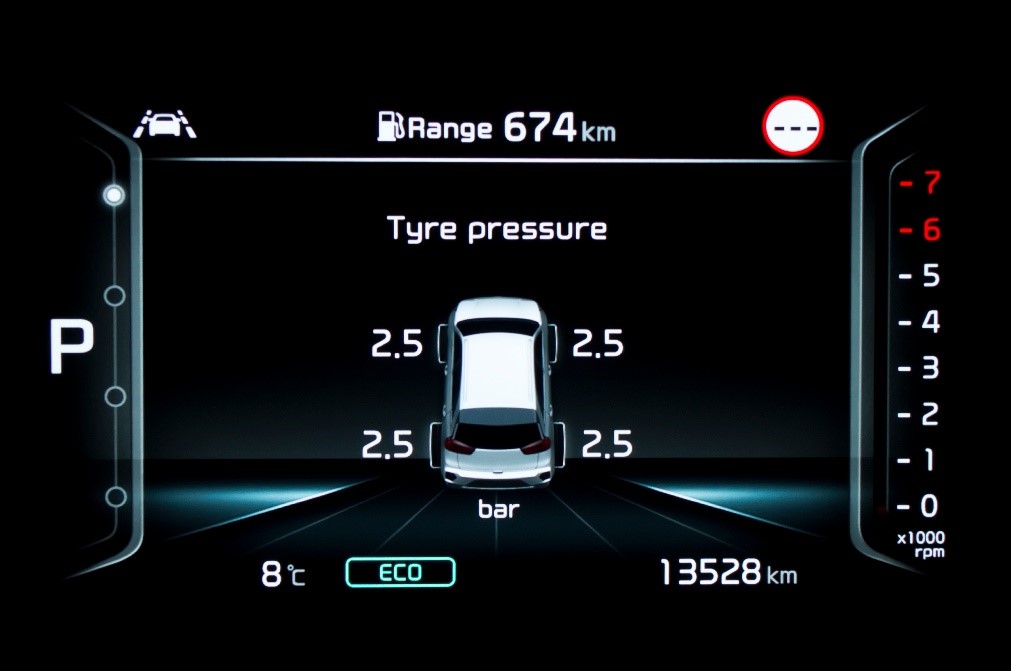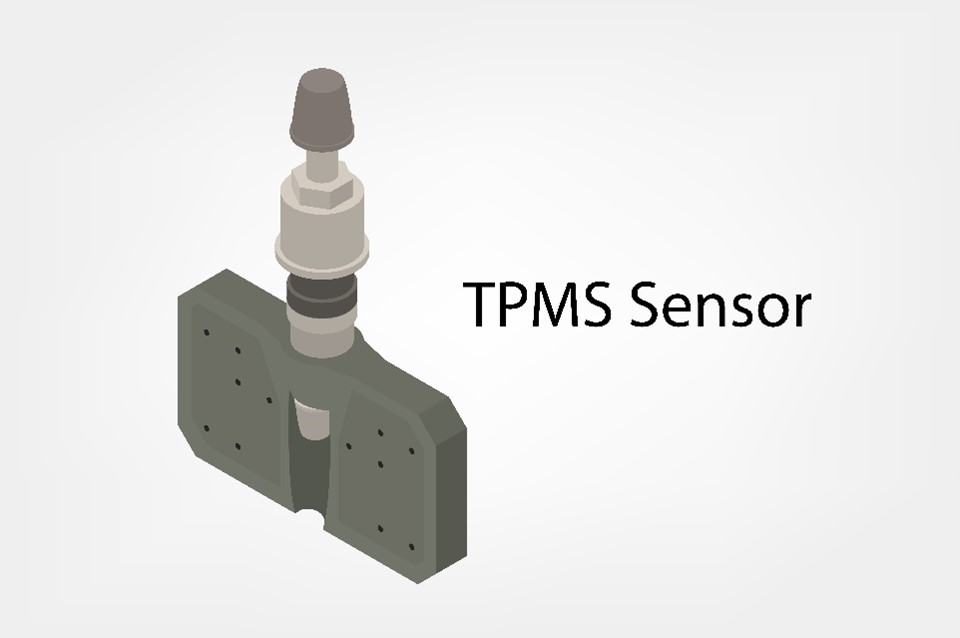"Enhancing Road Safety and Efficiency: The Power of Tyre Pressure Monitoring Systems (TPMS)"
In today's automotive landscape, the quest for road safety and optimal efficiency has led to the widespread adoption of Tyre Pressure Monitoring Systems (TPMS). By alerting drivers about the critical status of underinflated tyres, TPMS has emerged as a crucial tool in reducing accidents and elevating fuel efficiency. In this comprehensive blog, we delve into the myriad benefits of TPMS, delve into the mechanics of direct and indirect TPMS systems, explore various TPMS types, and offer a visionary glimpse into the promising future of this technology.

Benefits of TPMS:
The advantages of integrating TPMS into vehicles are both substantial and multifaceted:
- A Safer Journey: TPMS acts as a proactive safety measure, effectively preventing accidents caused by underinflated tyres. By instantly notifying drivers when tyre pressure drops to unsafe levels, TPMS assists in averting potential mishaps, particularly during sudden maneuvers or adverse road conditions.
- Optimized Fuel Efficiency:Proper tyre inflation is intrinsically linked to fuel efficiency. Underinflated tyres create additional rolling resistance, necessitating more energy to maintain forward motion. TPMS helps optimize fuel usage by keeping drivers informed about tyre pressure and empowering them to take corrective action promptly.
- Extended Tyre Lifespan: The lifespan of a tyre is inherently connected to its inflation status. Underinflated tyres endure uneven wear and tear, shortening their usability. TPMS's timely alerts and corrective guidance enable drivers to maintain optimal tyre pressure, thereby extending the lifespan of these crucial components.
- Eco-Friendly Motoring: The ripple effect of TPMS extends to environmental conservation. By promoting fuel efficiency and extending tyre longevity, TPMS actively contributes to reducing carbon emissions and the overall environmental impact of driving.

How TPMS Works:
TPMS technology operates through two distinct methodologies, each with its unique approach to maintaining optimal tyre pressure:
- Direct TPMS: This proactive system employs sensors strategically embedded within each tyre, continuously monitoring tyre pressure. These sensors transmit real-time data to the vehicle's onboard computer, which then promptly alerts the driver to any deviations from recommended pressure levels. The resulting information is seamlessly displayed on the dashboard or infotainment system.
- Indirect TPMS: A less sensor-intensive approach, indirect TPMS relies on the vehicle's Anti-Lock Braking System (ABS) sensors to detect variations in wheel speed. Underinflated tyres rotate at a different rate compared to properly inflated ones. The system interprets this data and triggers a dashboard warning if a tyre's rotational speed deviates, indicating potential underinflation.
Types of TPMS Systems
TPMS solutions are broadly categorized into two distinct types, each catering to specific preferences and requirements:
- Passive TPMS: These sensor-based systems operate sans batteries or electricity, relying on radio frequency signals to transmit data from the tyre to the vehicle's computer. This data is then analyzed to provide real-time insights into tyre pressure.
- Active TPMS: Employing battery-powered sensors, active TPMS systems deliver accurate and continuous tyre pressure updates to the vehicle's computer. This information is then seamlessly presented on the dashboard, offering drivers an intuitive overview of their tyre health

The Future of TPMS:
As we embrace the dawn of a new era in automotive technology, TPMS is poised to evolve and expand its horizons even further. The future holds the promise of more sophisticated TPMS systems equipped with advanced capabilities:
- Enhanced Diagnostic Features: Future TPMS systems could potentially evolve to detect a broader spectrum of tyre-related issues beyond mere pressure variations. These advanced systems might identify irregular tread wear, punctures, or even potential tyre damage, providing drivers with comprehensive insights into their tyre health.
- Smartphone Integration: Technological convergence is on the horizon, wherein TPMS systems could seamlessly communicate with drivers' smartphones or other mobile devices. This integration could enable real-time notifications, enabling drivers to stay updated about their vehicle's tyre health at all times.
Conclusion:
In the ever-evolving realm of automotive innovation, the Tyre Pressure Monitoring System (TPMS) stands as a stalwart guardian of road safety and driving efficiency. Its far-reaching benefits extend from accident prevention and fuel conservation to environmental responsibility. As we venture into a future defined by cutting-edge automotive technologies, TPMS is poised to remain at the forefront, shaping a safer, more efficient, and ecologically conscious driving experience for generations to come.